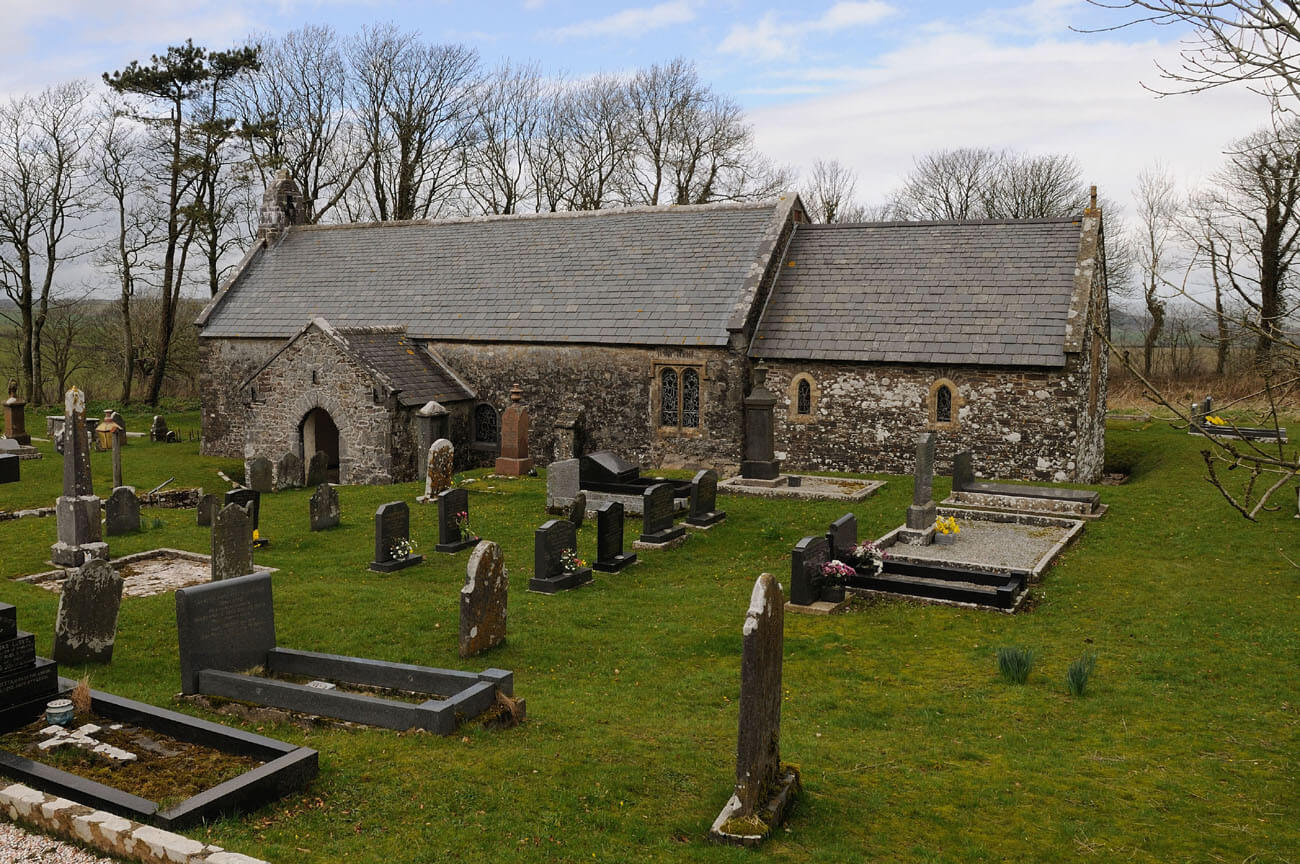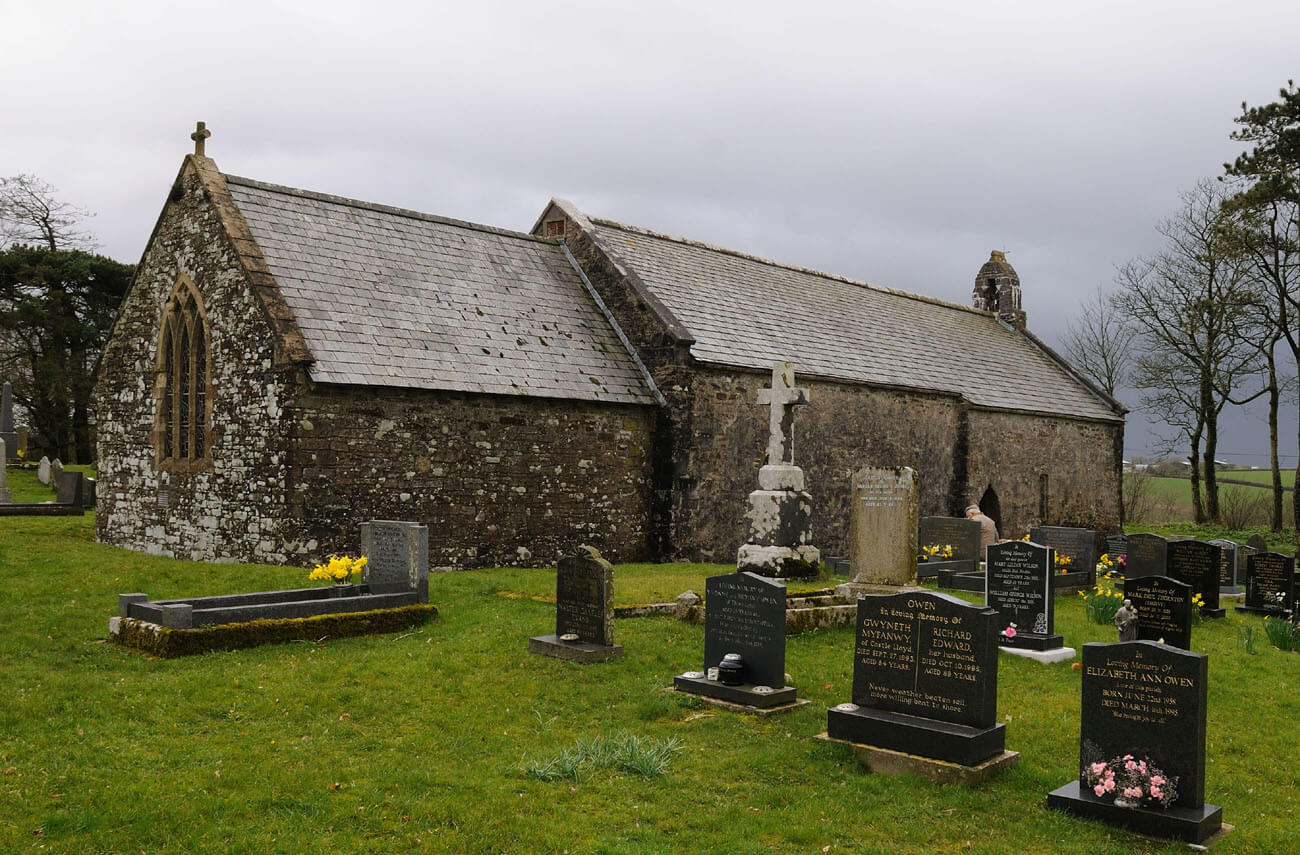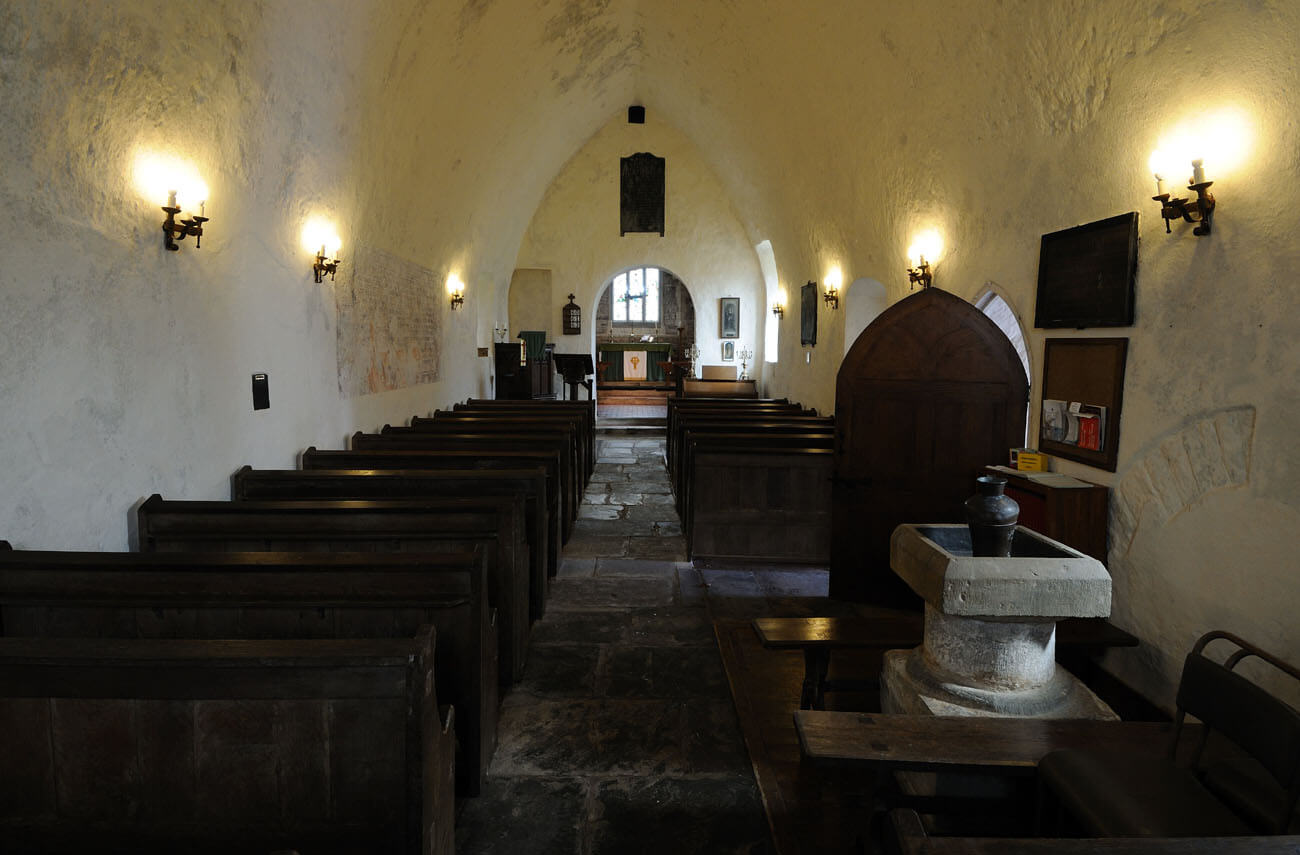History
Church of St Margaret in the village of Eglwyscummin (Welsh: Eglwys Gymyn) was built in the 12th century, although the circular shape of the churchyard suggests that the original church was built much earlier. According to tradition, it was founded by St. Cynin, a missionary to West Wales in the 5th century. In the Middle Ages, St Margaret’s Church was a parish church within the deanery of Carmarthen. It was probably under the patronage of the Benedictines from Monkton, monastery which was dissolved by Henry V and passed to the Duke of Gloucester and then to the monks of St Albans. By the early 18th century, the church was in a poor state. The first major repairs and rebuilding of the chancel were carried out in the 1870s and again in the early 20th century.
Architecture
Initially, the church was a small and very simple structure, consisting only of a unaisled nave, extended on the eastern side in the 12th century and closed again with a straight wall. The eastern part gained a similar width to the older western one, but a thinner northern wall, which created a slight offset there. Both before and after the expansion, the Romanesque church did not have an externally separated chancel or any stone annex. Its lighting was probably provided by simple, narrow and splayed windows, while the entrance was located in the southern wall in a simple portal with a semicircular head. The interior was probably still covered with an open roof truss.
In the first half of the 13th century, a chancel was added to the nave from the east, created on a plan of a rectangle narrower than the nave. In the 14th century, the spatial layout of the church was supplemented by a porch, added in front of the simple Gothic southern entrance to the nave. The old Romanesque southern portal, as unnecessary, was then bricked up. Some of the windows in the nave may have also been transformed than to better illuminate it. Presumably, windows with pointed arches or trefoils, popular at the time, could have been used in the chancel and nave. Probably the most impressive form had the eastern opening illuminating the altar, where there could have been a two-light window.
Inside the church, in the 14th century, the nave was covered with a pointed barrel vault and its floor level was raised. The porch, inside of which there were stone seats on the sides, was also covered with a barrel vault. The nave was connected to the chancel by a low and narrow 13th-century chancel arcade with a semicircular, still Romanesque archivolt. On its northern side, there was a passage to the upper loft of the wooden rood screen, which separated the two main parts of the church. The internal elevations of the church were covered with plaster and colourful paintings. It were created on the walls of the nave, and perhaps also in the chancel.
Current state
The church has retained medieval layout to this day, although the walls of its chancel were significantly rebuilt in the 19th century. Almost all the windows were also replaced at that time, apart from a small opening in the northern wall of the nave. Another early modern addition is the belfry set on the western gable and the cornice under the eaves. The most valuable monuments are located inside. These are the vaults of the nave and the porch, the chancel arcade, and above all a collection of wall polychromes from the turn of the 13th and 14th centuries on the northern wall of the nave, some of which were unfortunately covered with early modern paintings from the 17th century. In the northern wall of the nave there is a bricked-up portal from the 15th/16th century, in the southern wall there is a bricked-up portal from the 12th century and a Gothic portal from the 14th century in the porch.
bibliography:
Glynne S.R., Notes on the Older Churches in the Four Welsh Dioceses, „Archaeologia Cambrensis”, 2/1885.
Ludlow N., Carmarthenshire Churches, Church Reports, Llandeilo 2000.
Ludlow N., Carmarthenshire Churches, An Overview of the Churches in Carmarthenshire, Llandeilo 2000.
Salter M., The old parish churches of South-West Wales, Malvern 2003.
The Royal Commission on The Ancient and Historical Monuments and Constructions in Wales and Monmouthshire. An Inventory of the Ancient and Historical Monuments in Wales and Monmouthshire, V County of Carmarthen, London 1917.




